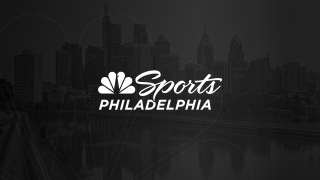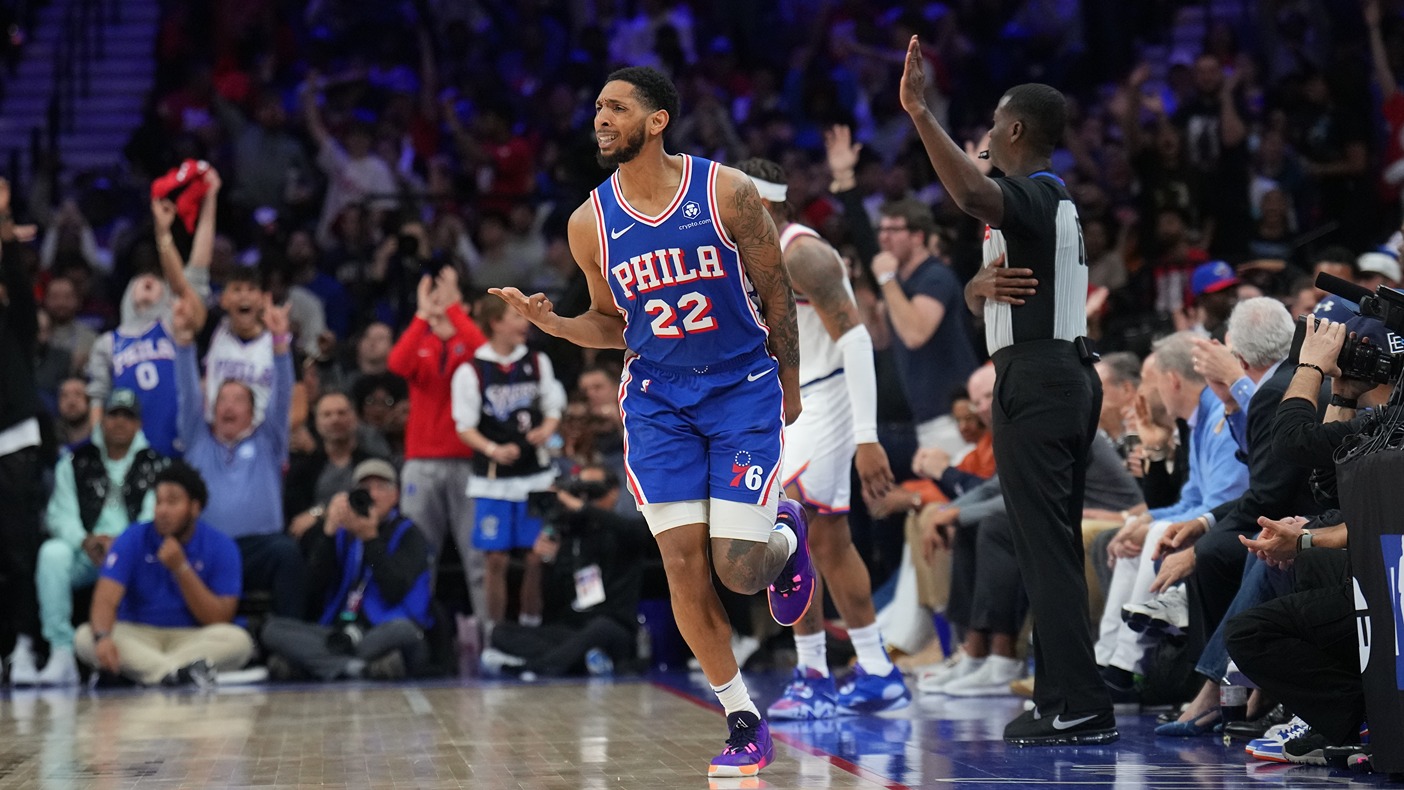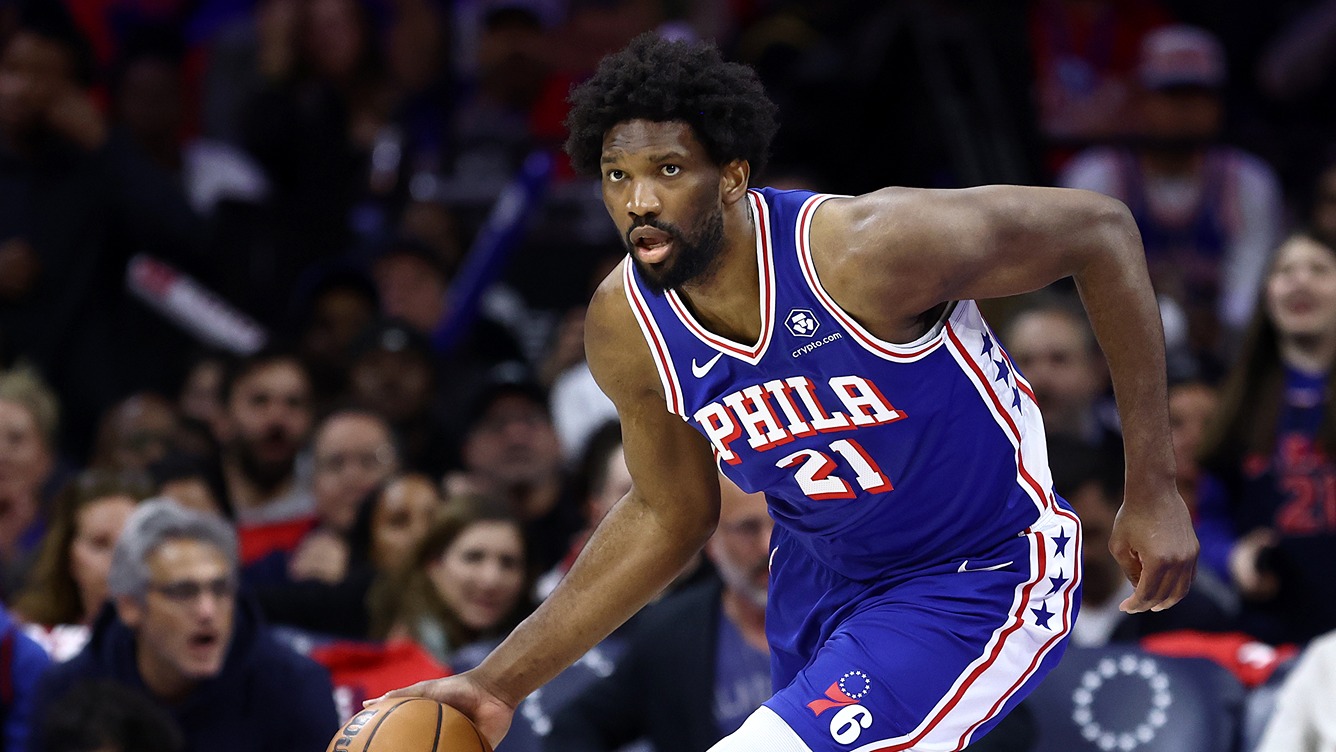
Sam Hinkie has been on the job for about a year now. He's made quite a few moves. Some were bigger than others. Some involved trades. Some were cap-space reliant. Some were more about deleting the mistakes he inherited. Almost all of them signaled a shift in team-building philosophy and how the organization operates. A look at 10 of his decisions:
10. Acquiring Furkan Aldemir (and Royce White)
I can already hear the objections. Royce White? He never even played for them. Which is exactly the point. White never had a real chance to play for the Sixers. White was the price of doing business. Which is why this move made the list.
The Rockets didn’t want White any longer. Houston GM Daryl Morey fully admitted that drafting White was a mistake. He wanted to dump White and clear his salary for various reasons. You may remember that Hinkie and Morey worked together. Hinkie was aware of White’s travel limitations.
Morey and Hinkie talked. Before the trade, the Sixers had about $19 million in cap space. By acquiring White, the Sixers agreed to pay his $1.7 million salary. That’s a small figure, especially when White’s contract included a team option that allowed the Sixers to turn around and cut White. In exchange for taking White and his salary from the Rockets -- and, by the way, some people in the league weren’t thrilled with that perceived favor -- the Sixers got the rights to a draft-and-stash player that Hinkie likes: Furkan Aldemir.
The 22-year-old Turkish forward may or may not develop into someone the Sixers put on their roster. His DraftExpress profile describes him as “somewhere between 6-9 to 6-10, with a strong frame, good length, and average athleticism by NBA standards.” But when you have a team that’s rebuilding -- and that’s owned by a consortium of super wealthy guys who are getting richer -- why not take a chance on Aldemir? It cost them only White’s $1.7 million salary. That’s as low-risk as it gets in the NBA.
9. Trading for Tony Wroten
Whatever you think of Wroten, the Sixers got him for next to nothing. Wroten was the 25th pick in the 2012 draft, but he played just 7.8 minutes per game over 35 outings in his first season with Memphis. The Sixers acquired him for a 2014 second-round pick and a trade exception.
His game has a long way to go. He turns the ball over too much and his three-point shot is somewhere beyond dreadful at the moment (21.3 percent on 188 attempts last year). But. He’s 6-6. He can get to the rim whenever he wants. He has the size to give opposing guards issues (if he learns to play better defense, which is a big if). And he’s only 21. Maybe that shot never gets any better. Maybe he keeps making bad passes. Or maybe, as he gets older, his game matures.
NBA
This is another example of how Hinkie does business: acquire assets, hope they develop, pay as little as possible.
8. Unloading Spencer Hawes
This was important for a few reasons. The Sixers decided Hawes didn’t fit their long-term plans. He’s an unrestricted free agent this offseason. You can argue that Hawes played well in their system, but they were going to let him walk out the door -- so they opened it for him and got what they could. That trade with Cleveland netted two 2014 second-round picks, Earl Clark and Henry Sims.
They immediately waived Clark. Sims costs them nothing (non-guaranteed deal in 2014-15 with a $915,000 cap hit). The two second-rounders are folded into the five they have for Thursday’s draft. The odds on hitting it big with second-round picks aren’t great, but having them is better than getting nothing at all. (Second-rounders can be useful in different ways.)
But the key here was the cap space. By moving Hawes, they dropped to about $13.4 million below the cap at the time. That set them up for the next move on this list.
7. Something for nothing (cap space to pay off Arnett Moultrie)
At the trade deadline, the Sixers acted as a third-party facilitator in a deal between the Nuggets and Wizards. The Sixers got Eric Maynor and two future second-round picks. What they gave up was a small amount of financial flexibility (made possible, in part, by unloading Hawes) by agreeing to take Maynor’s salary, which included a $2 million cap hit this past season and a $2.1 million hit next year. Maynor played only eight games for them before he was waived.
Again, it was the price of doing business to get those two second-rounders -- which essentially cost just over $4 million and could very well pay off the Arnett Moultrie debt. It was one of the many moves Hinkie made to untangle the knots left by the previous administration. Which reminds me …
6. Waiving Kwame Brown
Brown spent more time on the bench and at the postgame buffet than he did on the court. Hinkie ended the charade. The Sixers paid him to go away. It was the merciful decision -- for the team, for Brown, for the fans. Here’s what we wrote at the time. Short and (not-so) sweet.
5. July 1, 2013 – course correction
If there was one day that signaled the transition from the old way of doing business to the new, this was it. Here’s exactly how it appears on the Sixers’ transaction page:
Andrew Bynum, previously with the Philadelphia Sixers, became a free agent.
Royal Ivey, previously with the Philadelphia Sixers, became a free agent.
Charles Jenkins, previously with the Philadelphia Sixers, became a free agent.
Damien Wilkins, previously with the Philadelphia Sixers, became a free agent.
Dorell Wright, previously with the Philadelphia Sixers, became a free agent.
Nick Young, previously with the Philadelphia Sixers, became a free agent.
4. Drafting Michael Carter-Williams
Hinkie found a nice piece in a weak draft. Taking Carter-Williams with the 11th overall pick worked out better than expected. MCW averaged 16.7 points, 6.3 assists, 6.2 rebounds and 1.9 steals. He led all rookies in each category. He was only the third player in history to do so (after Oscar Robertson and Alvan Adams). Carter-Williams also led all rookies in PER (minimum 20 minutes per game).
All of that was good. But despite sweeping the counting stats, he has some serious holes in his game. He hit just 32.9 percent of his attempts from three-feet or more. He made only 26.4 percent of his threes (on 3.1 attempts per game). And he had a painfully ugly 48 true shooting percentage. Even Evan Turner would recoil at those numbers. He also had a much-too-high turnover rate (16.9).
Part of that was owed to his heavy 25.7 usage rate. Part of it was because he didn’t have great teammates. And part of it was because he has things to work on. Specifically, his jumper.
But as 11th overall picks go, it was a nice pull. MCW’s value might never be higher, which is why he might be available if the right trade offer comes along.
3. Goodbye, Evan Turner
It was a mistake. We can all agree on that now, can’t we? The Sixers made the safe pick in the 2010 NBA draft. They went with Turner. In retrospect, you’d rather have Derrick Favors (who went third), or Greg Monroe (who went seventh), or Gordon Hayward (who went ninth), or Eric Bledsoe (who went 18th). You’d much rather have DeMarcus Cousins (fifth) or Paul George (10th).
It just never worked out here for Turner. He was an OK rebounder and passer. He was never a great defender. He was a chronic -- sometimes comic -- over-dribbler. And he wasn’t very efficient. During his time in Philly, he had 12.4 PER and a 49.8 true shooting percentage. Those are not good figures. They are especially not good for a second overall pick. And he never learned to shoot the three well, especially from the corners.
Hinkie unloaded Turner (who is a restricted free agent) and Lavoy Allen and got what he could from Indiana: Danny Granger (who was waived) and Golden State’s 2015 second-round pick. The market wasn’t there for Turner. Instead of giving him a pointless qualifying offer this offseason, the Sixers did the necessary thing. They moved on.
2. Hiring Brett Brown
This is more of a decision than a move/transaction. But you get the idea. The run-up to the Brett Brown hiring was interesting. Some fans and reporters wondered why the Sixers would draft players and go to summer league in Orlando without a head coach. Hinkie shrugged. That’s one of the most important things we learned about him: He’s patient and numb to public/media perception. Then he grabbed one of Gregg Popovich’s lieutenants, who installed a math-friendly offensive system: play fast, get to the rim or shoot threes, try to avoid the long two. The defense still needs a lot of work. And Brown still needs better players before we can accurately judge him.
As team-building goes, it’s important to find a guy who shares your overarching beliefs. Hinkie appears to have that in Brown, a guy who often talks about creating a culture because he saw how it was done with great success in San Antonio.
1. The Jrue Holiday trade
It changed everything we knew about the Sixers. It was the formal introduction to Hinkie, a man who is not afraid to make moves, even if those moves include pieces that conventional wisdom held as untouchable assets.
At the time, some people were shocked. How could the new, first-time general manager trade a then-23-year-old coming off his first All-Star appearance? It was the right move. The Sixers sent Holiday and the 42nd overall pick (which ended up being Pierre Jackson) to New Orleans for Nerlens Noel (who was taken sixth overall) and the Pelicans' 2014 first-rounder (protected 1-5).
The Sixers got Noel, who might have been the first overall pick if he hadn’t blown out his ACL. They got the Pelicans’ first pick for this Thursday night (10th overall). And it allowed them to take MCW and also begin tanking preparations that resulted in the third overall pick in this draft. So, basically, it was two first-round selections -- or three if you want to count how it affected the tanking effort -- and the Rookie of the Year for Holiday and a second-rounder.
Holiday is a very nice player, but he isn’t among the top-10 point guards in the NBA right now. Guys I’d definitely take ahead of Holiday, in no particular order: Chris Paul, Steph Curry, Russell Westbrook, Kyle Lowry, John Wall, Kyrie Irving, Goran Dragic, Mike Conley, Tony Parker, Damian Lillard and Ty Lawson. And I’d have to at least consider Jeff Teague.
With one move, Hinkie reset the franchise. The reboot remains in process.


